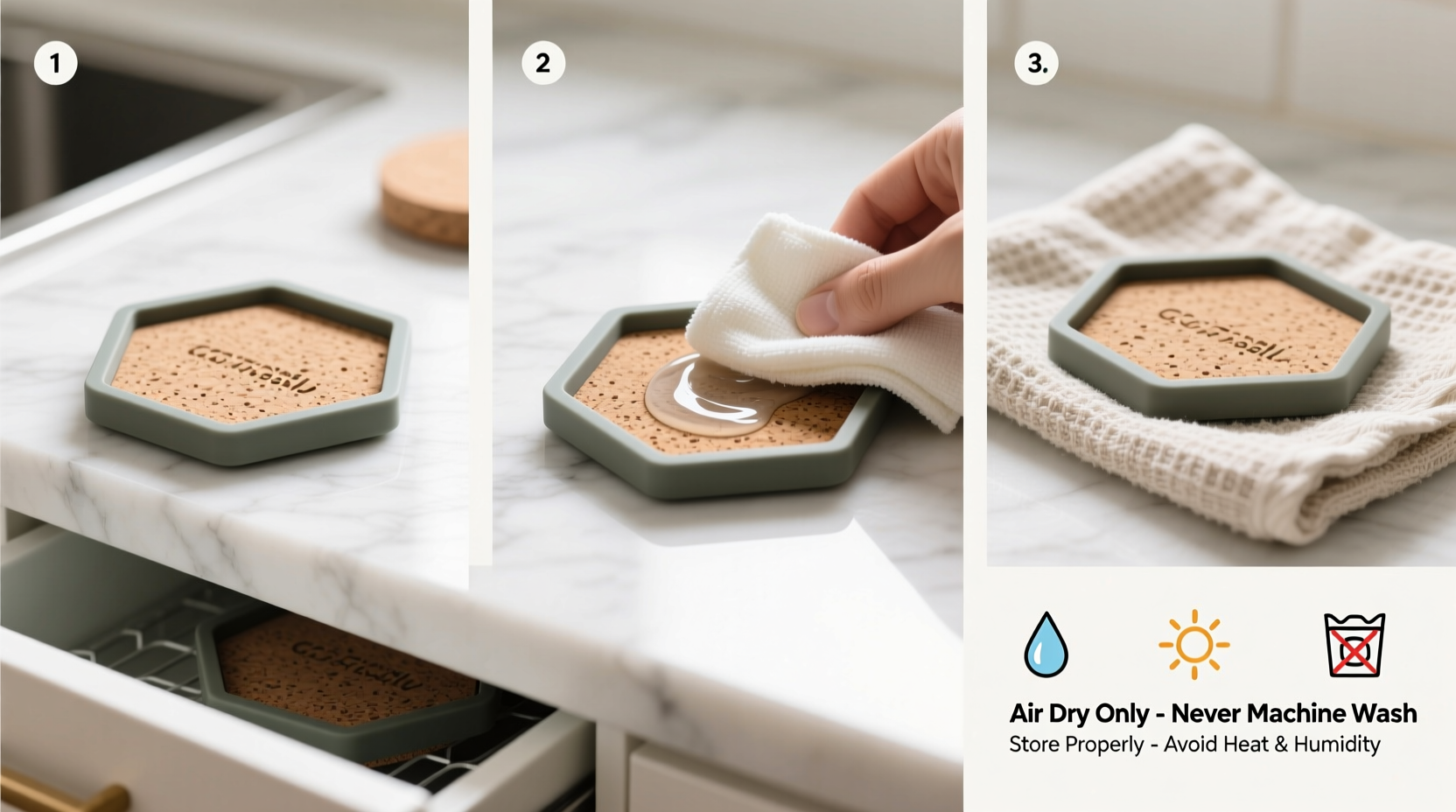Insulated coasters have become a staple in modern homes, offices, and cafes. Designed to protect surfaces from condensation and heat while preserving drink temperature, they offer both function and style. However, frequent use exposes them to moisture, spills, stains, and bacterial buildup. Without proper maintenance, their insulation efficiency and appearance degrade over time. Understanding how to clean and care for these coasters properly not only extends their lifespan but also ensures hygiene and continued performance.
Understanding Insulated Coaster Materials

Before cleaning, it's essential to identify the materials used in your insulated coaster. Most are constructed with a layered design: a top layer (often silicone, fabric, or cork), a middle insulating core (usually foam or neoprene), and a bottom non-slip layer (rubber or felt). Each material reacts differently to water, heat, and cleaning agents.
- Silicone-top coasters: Resistant to heat and moisture; easy to wipe down.
- Fabric-covered models: Prone to staining and mildew if not dried properly.
- Cork-based coasters: Naturally antimicrobial but can warp when soaked.
- Neoprene cores: Provide excellent insulation but degrade under prolonged UV exposure or high heat.
Always check manufacturer instructions before applying any cleaning method. When in doubt, assume the coaster is sensitive and proceed gently.
Step-by-Step Guide to Cleaning Insulated Coasters
Regular cleaning prevents residue buildup and maintains thermal performance. Follow this detailed process based on coaster type and soiling level.
- Remove Surface Debris: Wipe off dust, crumbs, or dried liquid with a dry microfiber cloth.
- Pretreat Stains: For sticky or colored spills (like coffee or wine), apply a drop of mild dish soap directly to the spot and let sit for 2–3 minutes.
- Clean Gently:
- For wipe-clean types: Use a damp cloth with warm, soapy water. Avoid soaking.
- For hand-washable models: Submerge briefly in lukewarm water with gentle detergent. Do not scrub aggressively.
- Rinse Thoroughly: Wipe away all soap residue with a clean, damp cloth. Leftover suds attract dirt and may cause skin irritation.
- Dry Completely: Place coasters flat on a drying rack in a well-ventilated area. Never stack them until fully dry—this can trap moisture and promote mold.
- Sanitize Monthly: Once a month, disinfect using a solution of one part white vinegar to three parts water. Spray lightly and air-dry.
Avoid dishwashers and washing machines unless explicitly approved by the manufacturer. The agitation and heat can delaminate layers and ruin insulation.
Do’s and Don’ts of Coaster Care
| Do’s | Don’ts |
|---|---|
| Clean after every heavy use or spill | Soak coasters for extended periods |
| Store in a cool, dry place away from sunlight | Leave wet coasters stacked or in drawers |
| Use mild, pH-neutral cleaners | Apply bleach, ammonia, or abrasive pads |
| Rotate coaster usage to prevent uneven wear | Place near stoves, radiators, or open flames |
| Inspect monthly for swelling or peeling | Use sharp objects to scrape off residue |
Maintaining Long-Term Performance
Longevity depends not just on cleaning frequency, but on consistent habits. Over time, repeated exposure to moisture and temperature extremes weakens adhesives and degrades insulating materials. To preserve structural integrity:
- Limit direct contact with icy drinks for more than 30 minutes. Condensation inside layers leads to separation.
- Avoid placing hot mugs on coasters labeled for cold beverages only. Thermal shock damages internal foam.
- Keep coasters out of humid environments like bathrooms or near kitchen sinks.
- Replace coasters showing signs of bubbling, warping, or persistent odor—even after cleaning.
“Proper care of insulated coasters isn’t just about cleanliness—it’s about maintaining the science behind their function. A compromised seal means reduced insulation.” — Dr. Lena Torres, Product Durability Analyst at HomeTech Labs
Real Example: How a Café Extended Coaster Life by 70%
A boutique café in Portland used custom insulated coasters for customer service but replaced them every four months due to staining and odor. After consulting a textile care specialist, they implemented a simple protocol: staff wiped coasters with a vinegar solution after each shift and stored them in ventilated trays overnight. They also introduced a weekly deep-cleaning schedule using oxygen-based cleaner.
Within six months, replacement frequency dropped to once every ten months. Customers noted improved freshness, and the café saved over $1,200 annually. The key was consistency—not intensity—of care.
Monthly Maintenance Checklist
Stay proactive with this practical checklist to keep your coasters in peak condition:
- ✅ Inspect all coasters for physical damage (bubbling, fraying, discoloration)
- ✅ Perform a deep clean using mild detergent
- ✅ Sanitize with vinegar solution or hydrogen peroxide spray
- ✅ Rotate coaster sets to balance wear
- ✅ Air-dry completely before storage
- ✅ Store flat in a breathable container or open shelf
Frequently Asked Questions
Can I put insulated coasters in the dishwasher?
Most cannot withstand dishwasher conditions. High heat and strong detergents may melt adhesive layers or warp materials. Only do so if the manufacturer explicitly states it’s safe. When in doubt, hand-wash.
Why do my coasters smell musty after washing?
This usually indicates trapped moisture between layers. Ensure full air-drying time—up to 24 hours—and never store damp coasters. If odor persists, try wiping with diluted baking soda paste, then rinse and dry thoroughly.
How often should I replace insulated coasters?
With proper care, quality coasters last 2–3 years. Replace them when you notice loss of insulation, visible delamination, persistent stains, or difficulty cleaning. Regular inspection helps catch issues early.
Final Thoughts: Small Habits, Lasting Results
Insulated coasters are small items, but their impact on table protection and beverage enjoyment is significant. Treating them with routine attention pays off in durability, hygiene, and aesthetic appeal. Just as you wouldn’t neglect cleaning a favorite mug or glassware, coasters deserve equal care. By integrating simple cleaning steps into your household or workplace routine, you preserve both function and form.









 浙公网安备
33010002000092号
浙公网安备
33010002000092号 浙B2-20120091-4
浙B2-20120091-4
Comments
No comments yet. Why don't you start the discussion?